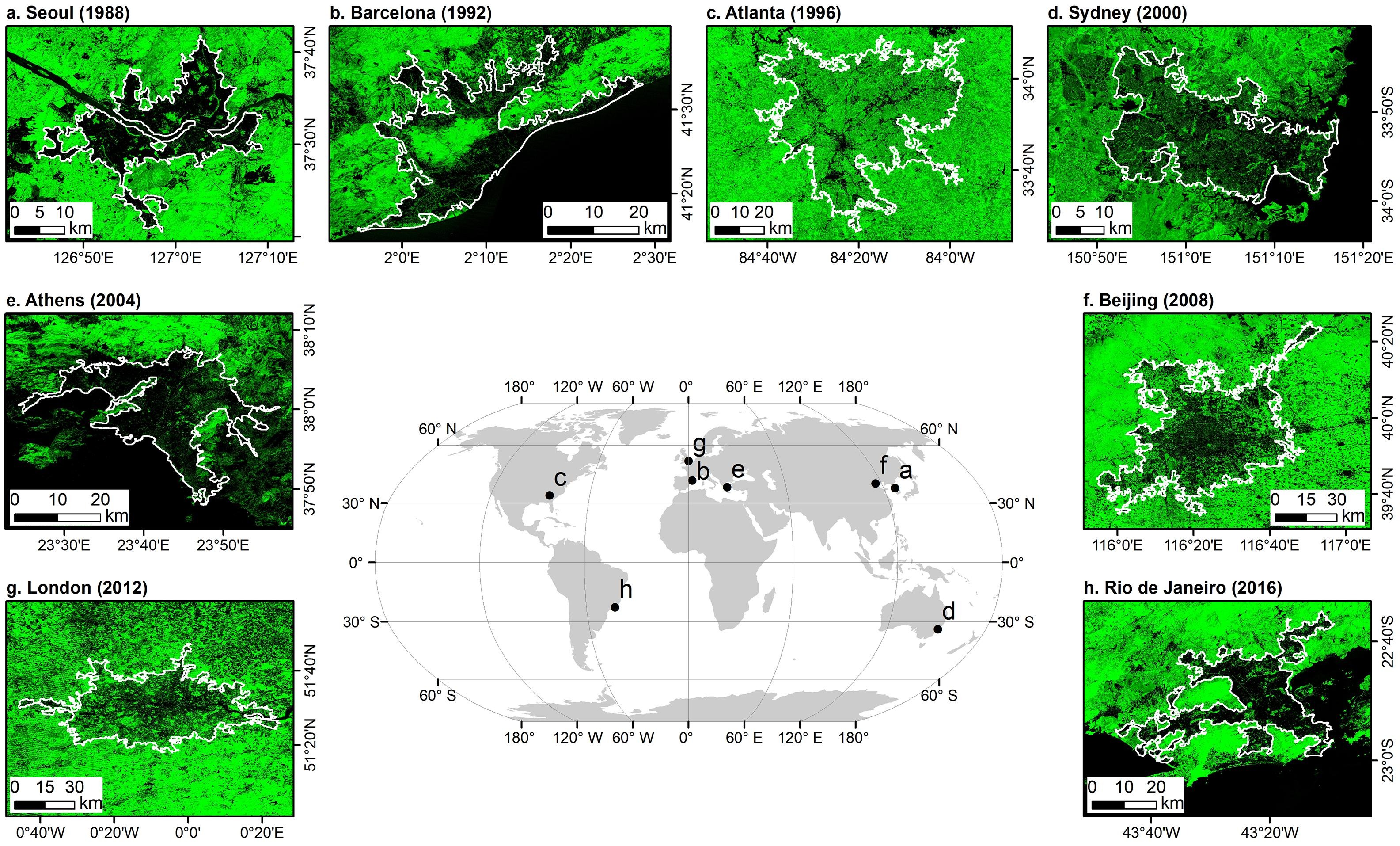Olympic effects on reshaping urban greenspace of host cities
The Olympic Games are one of the most influential mega-events worldwide, yet little is known about the extent how these events transform the physical appearance of urban greenspaces. To fill this knowledge gap, we use time-series satellite images to map annual greenspace distribution across eight host cities of the Summer Olympics between 1988 and 2016, and quantify changes in greenspace coverage, exposure, and landscape before and after the games. By further applying a difference-in-differences model, we unravel the underlying causal impacts of Olympic Games on urban greening. Results show that Olympic Games not only promote overall increases in greenspace coverage but also enhance people’s ambient exposure to greenspace, of which the influencing magnitude is more evident nearby Olympic venues and the associated buffers. We also find urban greenspace landscape generally becomes more irregular and disaggregated after the Games. Statistically, Olympic-associated urban modifications directly contribute to a 3.41 % increment in greenspace coverage within the urban extent (p < 0.01). Our findings indicate the widespread Olympic effects on reshaping urban greenspaces, which provide new insights on maintaining Olympic sustainability and facilitating green city development.

An overview of eight host cities of the Summer Olympics between 1988 and 2016. Fractional greenspace maps of the eight Olympic host cities overlaid with their white urban boundaries above. The greener represents a higher greenspace cover rate (ranging from 0 to 1). Black indicates no greenspace coverage.
Reference: Ying Tu, Bin Chen, Jun Yang, and Bing Xu. Olympic effects on reshaping urban greenspace of host cities. Landscape and Urban Planning 230 (2023): 104615.